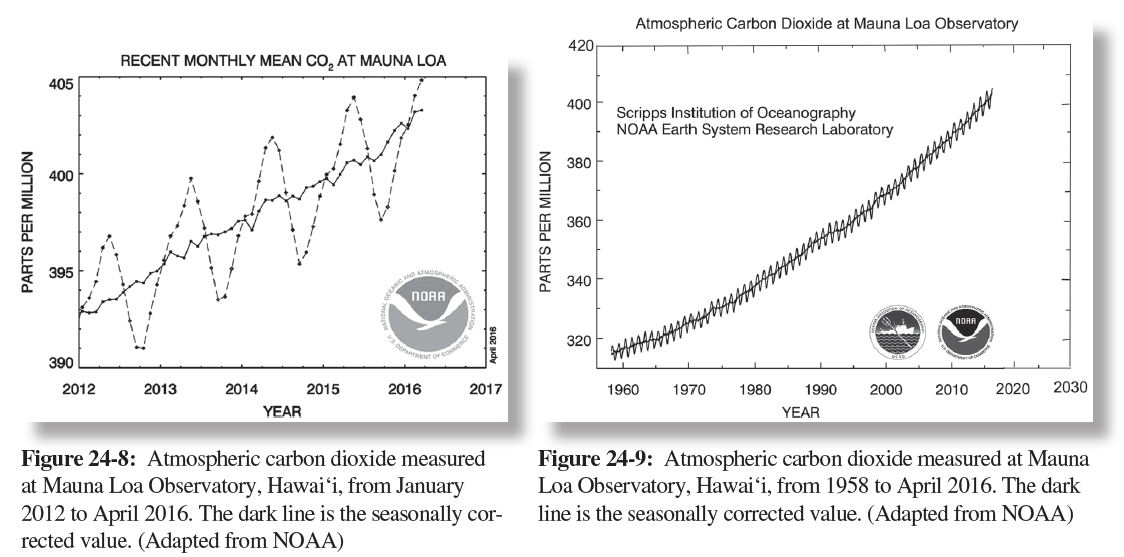Notice that the concentration of CO2 in the atmosphere reaches its highest point at the same time each year. What explains the timing of the annual fluctuation in CO2? (Hint: Think about the process of photosynthesis and plant respiration, and the locations of large forests on Earth.)
The question is based on Figures 24-8 and 24-9, charts showing the change in atmospheric carbon dioxide measured at the Mauna Loa Observatory in Hawai‘i, from 1958 to April 2016.

What will be an ideal response?
Plant respiration (and so the release of carbon dioxide) dominates through the winter in the Northern Hemisphere's forests; by early summer photosynthesis (and so the release of oxygen) dominates.
You might also like to view...
Which of the following clouds is associated with the development of tornadoes?
A. nimbostratus B. altocumulus C. cumulonimbus D. cirrostratus
Occupants of the International Space Station experience weightlessness because the station
A. doesn't rotate. B. is beyond the main pull of Earth gravity. C. both of these D. none of the above
El Niño is a time of ____
a. warmer than normal ocean water in the Pacific Ocean west of South America b. colder than normal ocean water in the Pacific Ocean west of South America c. strong upwelling off the west coast of South America d. abnormally fast ocean currents worldwide e. stronger than normal currents carrying warm water towards Western Europe
The lightning stroke can heat the air through which it travels to an incredible 30,000 degrees Celsius (54,000 degrees Fahrenheit), which is ____ times hotter than the surface of the Sun.?
a. ?2 b. ?3 c. ?4 d. ?5 e. ?6